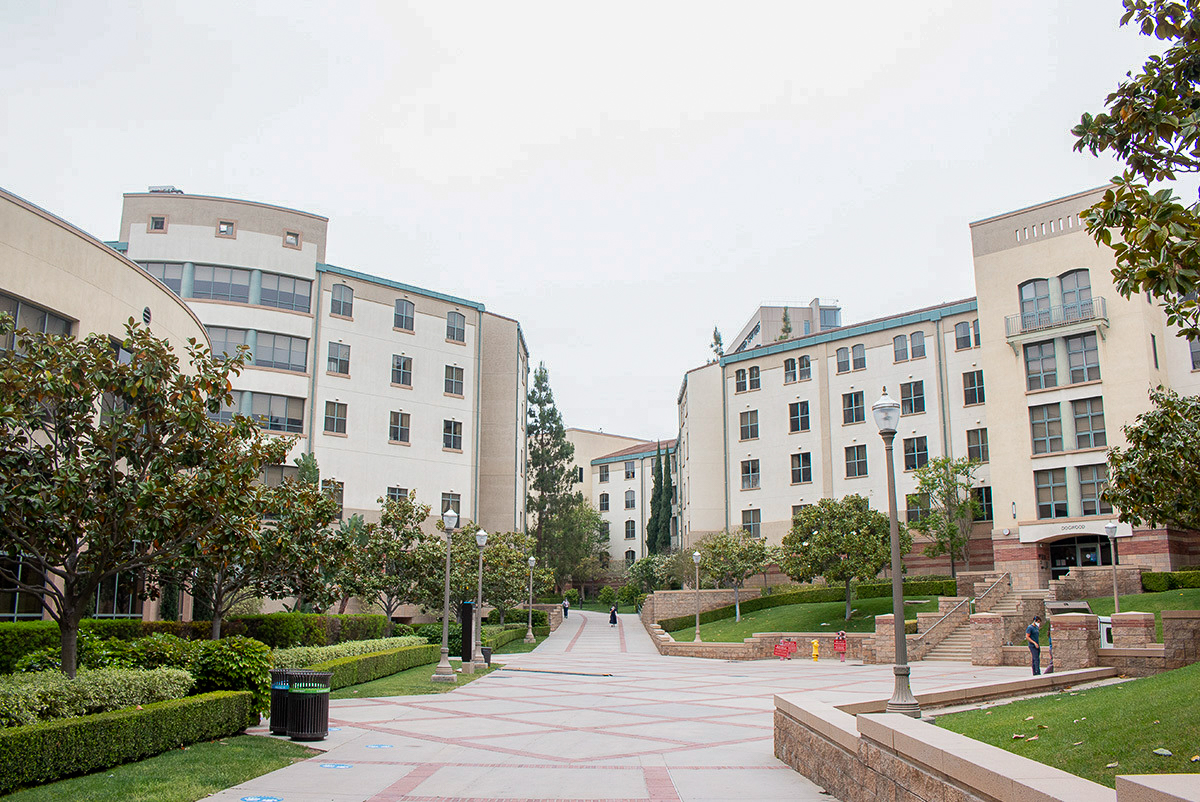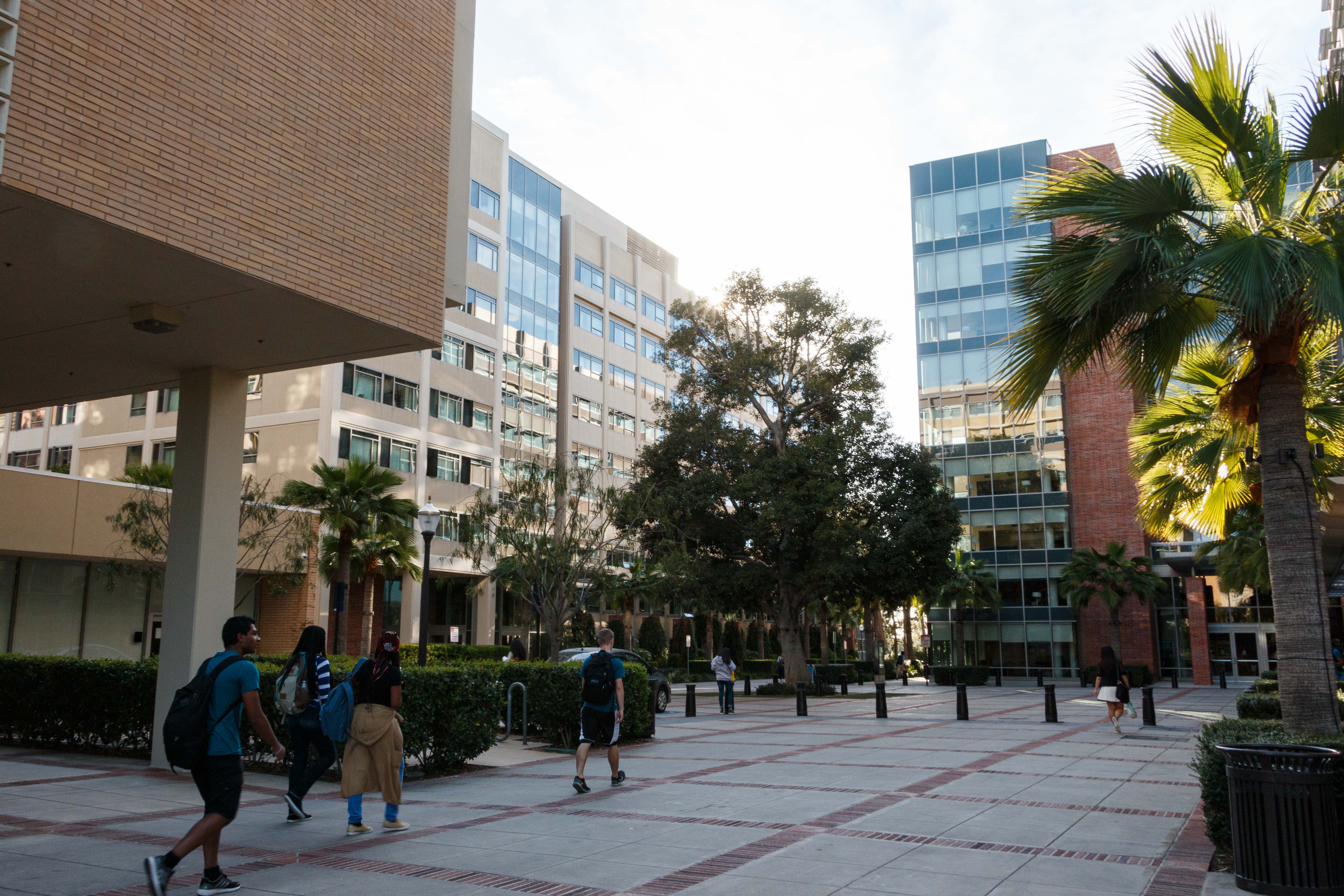UCLA Housing removes COVID-19 isolation rooms for students who test positive

UCLA Housing decided to remove isolation rooms for those who tested positive for COVID-19. Some of the notable isolation housing included several rooms in De Neve Birch. (Daily Bruin file photo)
By Alyssa Wong
Dec. 21, 2024 5:15 p.m.
UCLA Housing removed all isolation rooms for on-campus students who test positive for COVID-19.
This academic year, UCLA adjusted its COVID-19 policies to align with current public health guidelines while also balancing housing availability and other campus priorities, a UCLA Housing spokesperson said in an emailed statement. UCLA decreased the number of COVID-19 isolation rooms in September 2023 to several rooms in De Neve Birch, although, in previous years, entire dorm buildings had been used for isolation.
[Related: Students express concerns over UCLA Housing’s decrease of COVID-19 isolation rooms]
While the decision to entirely remove isolation housing was expected for cost reasons, the removal will leave various students and their families at risk, said Shira Shafir, an associate professor of epidemiology and community health sciences at UCLA.
COVID-19 is generally less serious in college-aged individuals, Shafir said, but added that UCLA has some students who are at increased risk of severe disease or who have family members who are at increased risk.
“The absence of isolation, … it’s essentially putting the entirety of the burden, both financial and logistical, on the students,” Shafir said.
Valerie So, a third-year linguistics and computer science student, said she was left with few accommodation options when her roommate tested positive for COVID-19 in the first week of fall quarter.
So said she originally planned to sleep in her floor’s lounge but was told by her resident assistant that this was not allowed. Although the RA then found people who could house her for one night, she said the RA was unable to find housing for the next day.
“What was suggested at that point was for me to go back into the dorm and just hope for the best,” So said.
So also said her building’s resident director sent her an email on COVID-19 safety while co-living with a sick roommate, which included advice to mask and socially distance within the small dorm.
“I didn’t really feel safe at all,” she said.
So then reached out to people by herself, ultimately finding a place to stay until her roommate began testing negative, she said.
It is nearly impossible to socially distance within a small dorm room, Shafir added.
“That statement reflects a lack of understanding of the underlying science,” Shafir said. “COVID is airborne, so that means just being six feet away is not going to protect someone from infection, especially if you have someone who is infectious in a small, enclosed space.”
The removal of isolation housing significantly increases the likelihood of roommates and others who share communal dormitory space getting infected, Shafir added. Housing buildings on the Hill, including Rieber Terrace, the Hitch suites and Hedrick Vista, contain shared common spaces like living rooms and restrooms.
However, Dr. Timothy Brewer – a professor of epidemiology at UCLA and an infectious diseases physician – said while it is ideal to isolate anybody who has a contagious illness, it is not always feasible.
“If your roommate is sick, try to minimize the amount of time you spend in your room,” Brewer said. “Try to wear a mask as much as possible, try to make sure that you’re good about washing your hands.”
Jesus Javier Serrano, a fourth-year physics graduate student with long COVID-19 –a condition where COVID-19 symptoms last three months or longer – said he may have developed asthma as a result of his COVID-19 infection.
“For a lot of immunocompromised people, a viral infection, especially one as serious as COVID, can mean life or death,” said Gwendolyn Hill, a UCLA alumnus and former UCLA Disabled Student Union coordinator.
It is important to reduce transmission because repeated COVID-19 infections increase the risk of developing long-term disability and long COVID-19, Shafir added.
There is data suggesting that COVID-19 infection also increases the risk of Type 1 diabetes and that repeated COVID-19 infection can increase the risk of heart damage and dementia, Shafir said.
“It’s not that COVID has gotten milder or that there’s less spread,” Hill, who also has long COVID, said. “It’s just that the UC, along with a lot of people, want to try and forcibly move on without implementing any sort of layered mitigation measures.”
So said she was not provided with any mitigation tools when her roommate was infected but felt that COVID-19 tests, which are less affordable, should have at least been provided.
Hill said she believes UCLA should make every mitigation tool as free and accessible as they can.
Serrano added that he believes UCLA should provide proper mitigations for a safe work and learning environment, as not everyone can afford equipment such as respirators.
While N95 respirators work better than regular surgical masks, Brewer said, even a typical surgical mask reduces the risk of transmission by about 60%.
Hill also said the LGBTQ Campus Resource Center reliably has free masks and PCR tests, while Mask Bloc LA – a mutual aid project distributing free masks in the Los Angeles area – also provides free masks and tests.
Grace Overman, a second-year history and disability studies student and a Congressional Advisory Board representative for DSU, said UCLA continuing messages around illness prevention via official email or social media could help remind students that COVID-19 has not ended.
“Continued COVID safety on campus is critical for the entire population of faculty, students and staff,” Shafir said.
The single most important thing is to be up to date on all vaccines, Brewer said, adding that vaccination helps prevent serious complications and, therefore, reduces the risk of getting long COVID-19.
Brewer said even if space does not exist for isolation housing, other precautions can still be taken, such as optimizing air exchange and ventilation in buildings. Having windows that can open and placing alcohol dispensers around buildings would also be beneficial, he said.
Shafir added that roommates should also make plans ahead of time on what to do should one of them get infected.
“The first thing to recognize is that SARS-CoV-2, the virus that causes COVID-19, is here to stay,” Brewer said.
It is a complicated situation, Shafir added, as COVID-19 is still a serious disease despite not being as serious as it once was.
“There is a drive to return to normal,” she said, “But unfortunately, the science right now tells us that it is not safe to return to the normal that existed pre-COVID.”
The Infectious Diseases Management Team brought together staff, faculty and students, including representatives from the Undergraduate Students Association Council and the Disabled Student Union, to ensure perspectives from disabled and vulnerable students were heard when making this decision, a UCLA Housing spokesperson said in an emailed statement.
“UCLA Housing is dedicated to fostering a safe and supportive environment for all students,” a UCLA Housing spokesperson said in the statement. “Those who feel vulnerable or uncomfortable with the new policy are encouraged to contact Housing and/or Office of Residential Life, where they can be connected with on-campus support services and resources.”
Contributing reports by Shaun Thomas, science and health editor.



